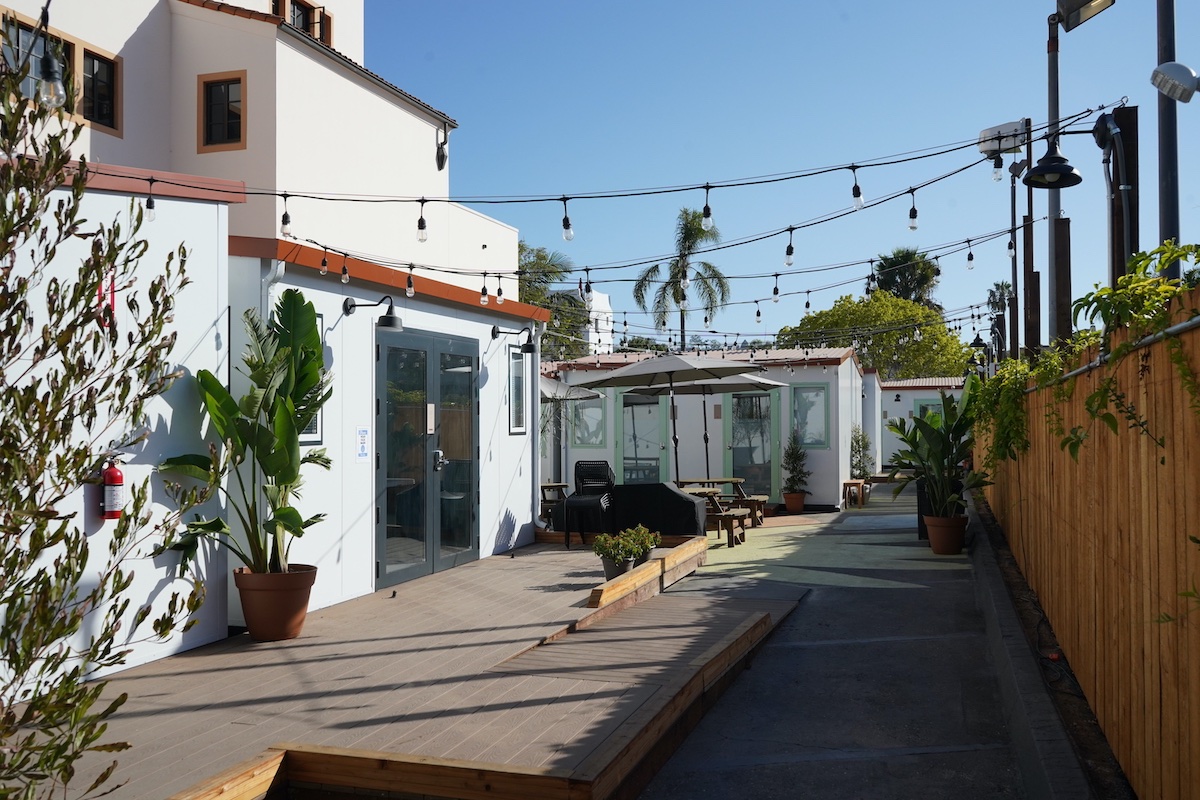Plans Afoot to Build 300 More Tiny Homes Across Santa Barbara County
DignityMoves to Build Four More Villages to House Chronically Homeless and Vulnerable Individuals

On August 8, the first handful of people began trickling into the prefabricated tiny home village located on the 1000 block of Santa Barbara Street. Several months later, the DignityMoves’ transitional housing project is humming along at full capacity, offering without incident or controversy a room of one’s own to 34 of some of the most chronically homeless and vulnerable individuals on the streets of downtown Santa Barbara.
“You can drive by 100 times a day and not even know we are there,” declared Jack Lorenz of DignityMoves, a nonprofit started by a group of Bay Area entrepreneurs seeking to move the needle when it comes to homelessness. So successful has the downtown project proved in its first few months of operation, Lorenz said at a forum hosted earlier this December by the Women’s Fund of Santa Barbara, that DignityMoves is now embarking on plans to build four more tiny home communities throughout Santa Barbara County. Translated into the number of units involved, that’s 300.
When all expenses are factored in, Lorenz said, the cost per unit at the Santa Barbara Street village is $50,000. When someone in the forum audience asked Lorenz what she could do to help, he said jokingly, “I could use $18 million.” But, of course, Lorenz wasn’t really joking.
The downtown tiny homes project has been a collaboration between DignityMoves, the County of Santa Barbara, and Good Samaritan Homeless Shelter, which is responsible for day-to-day management and coordinating the delivery of services. These include mental-health treatment, addiction recovery, health care, and a host of support programs designed to help residents become more self-reliant and transition into more permanent housing.
Each of the tiny homes are 64 square feet and come equipped with heating, air conditioning, and a door that can be locked from both inside and out. Pets are allowed as are partners; ancillary storage space is available, but no visitors are allowed.
Sign up for Indy Today to receive fresh news from Independent.com, in your inbox, every morning.
The plan is that residents will become ready for lift off after six to 12 months of rest, recuperation, rehabilitation, and preparation. To date all 34 residents have been made “document ready,” meaning they’ve secured all the necessary identification documents necessary to apply for and qualify for housing vouchers and Medi-Cal benefits.
The trick, of course, is locating enough available housing units for the people making the transition. To date, a handful of residents, have, in fact, made that leap. Twenty are receiving mental-health treatment or addiction assistance. Eleven have gotten jobs. Another six were asked to leave.
As Sylvia Barnard, head of Good Samaritan, explained to the Women’s Fund, “Shelter is not enough; outreach is not enough; services are not enough; it’s the entire package.”
The land for the four new villages will be provided gratis courtesy of Santa Barbara County. The largest proposal is slated for the City of Santa Maria, with more than 90 units. The acreage involved ranges from half an acre to a full acre; they range from vacant fields to vacant lots. Outreach to the surrounding neighborhoods is only now getting underway.
The most expensive component to this equation is not the housing per se but the services directed at the residents. The county has identified $1 million in federal American Rescue Plan Act (ARPA) funding to help cover some of the service costs and another $1.5 million in federal ARPA money to cover some of the capital costs. (Pipes, plumbing, and electrical hook-ups are essential.) Recent changes in the cost-recovery formulas allowed under Medi-Cal will make a major difference, allowing the federal government to underwrite many of the service and administrative costs.
Support the Santa Barbara Independent through a long-term or a single contribution.



